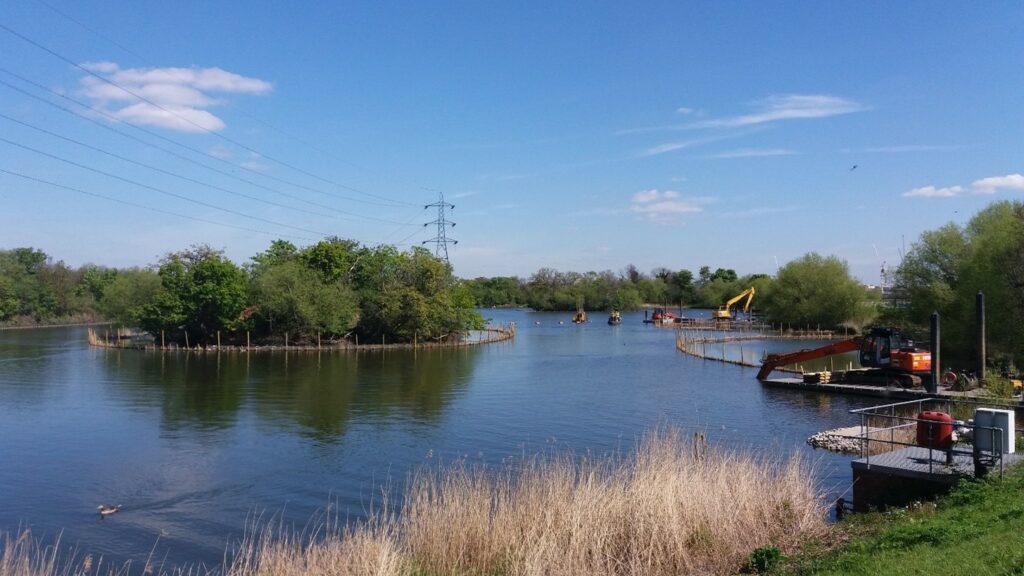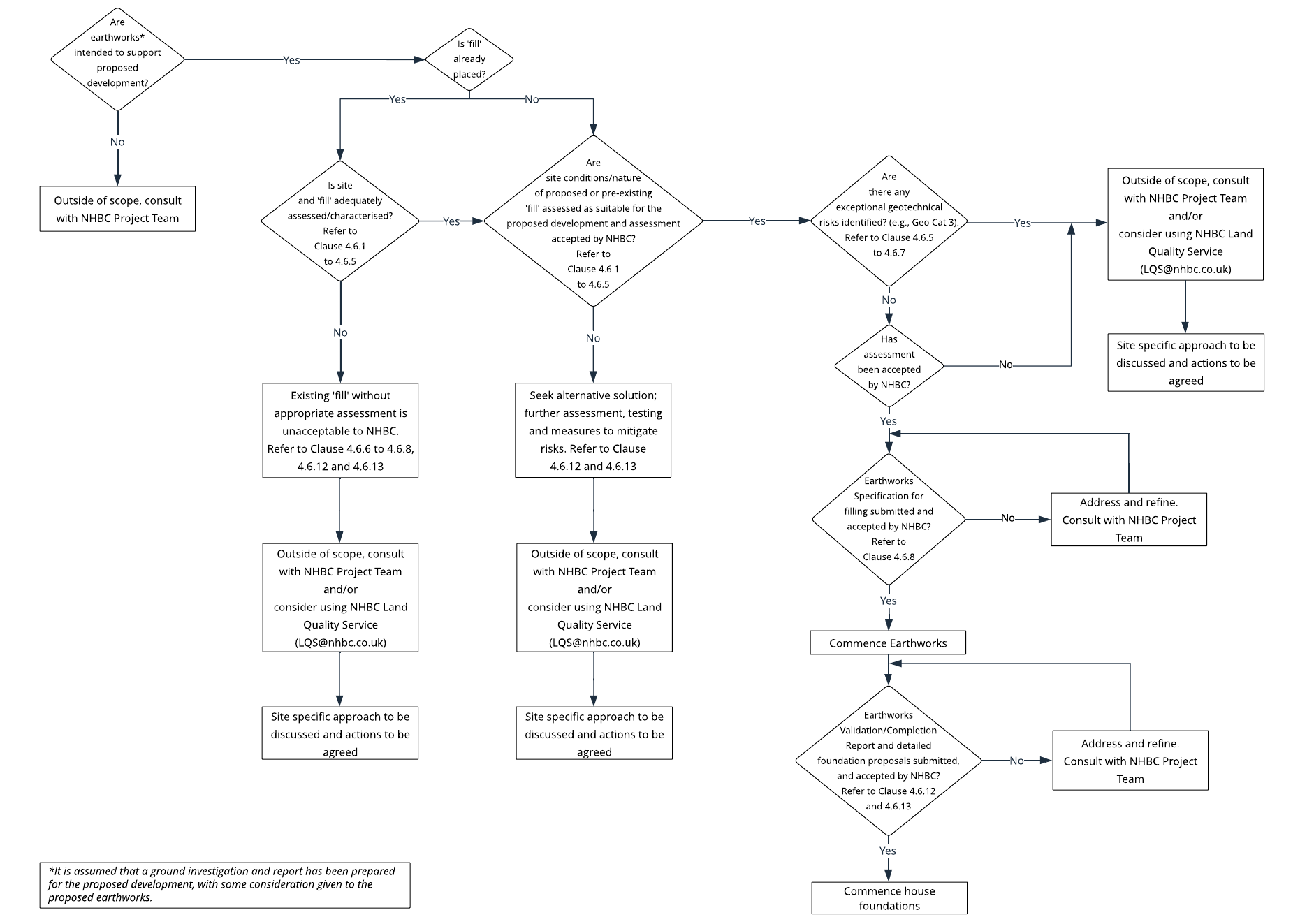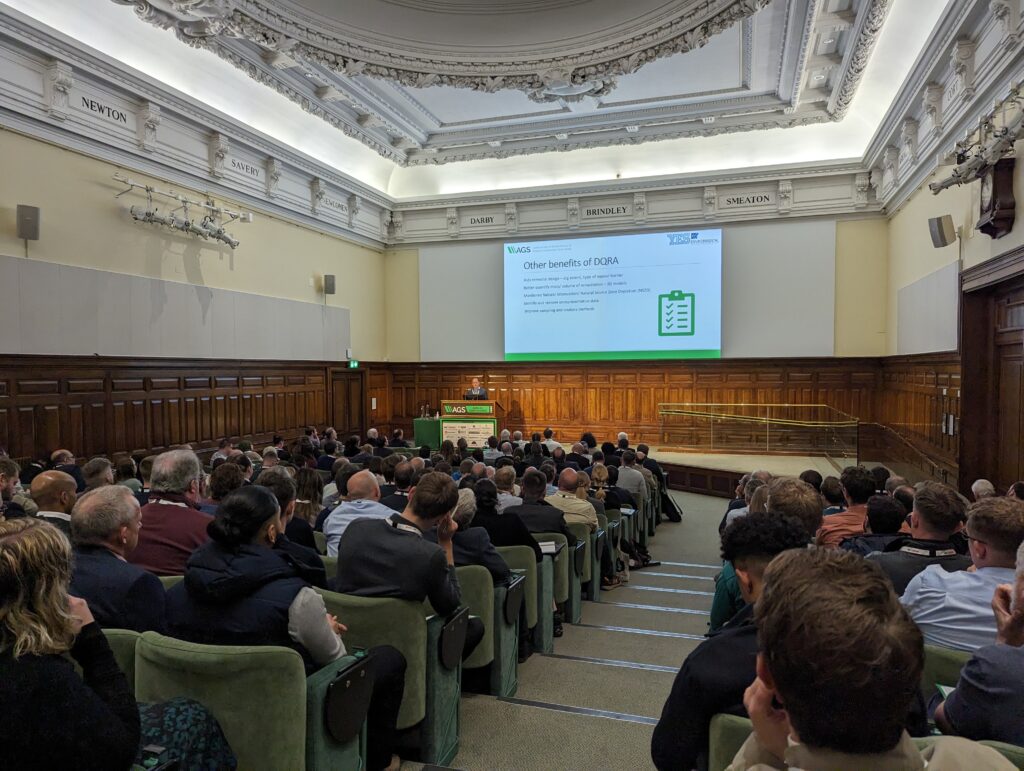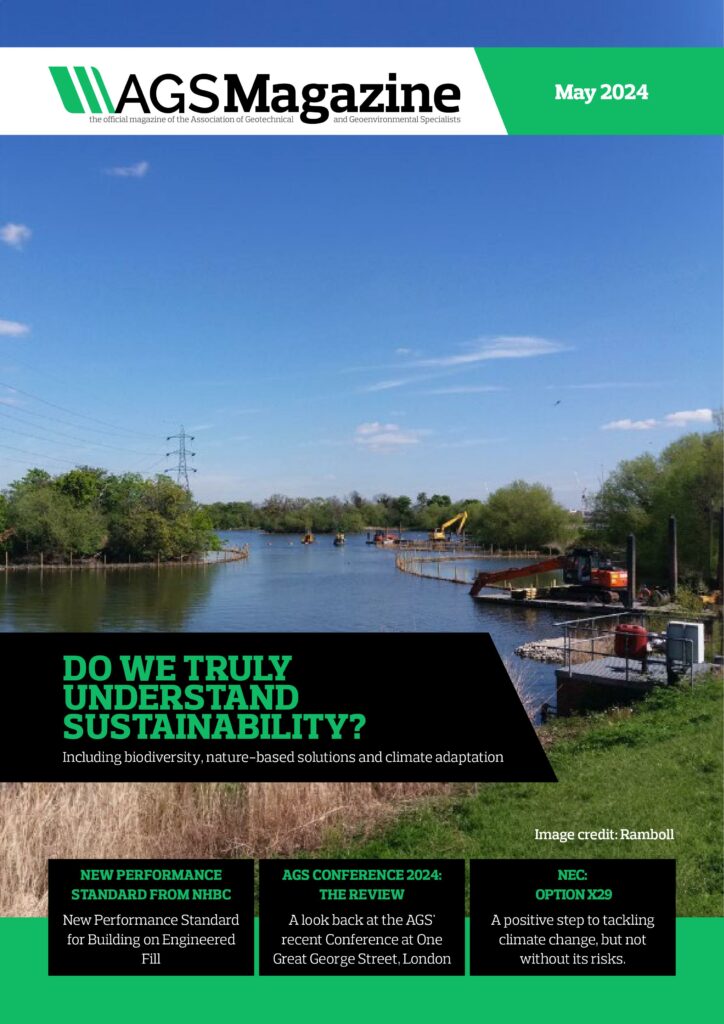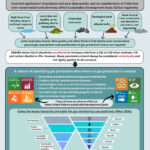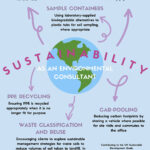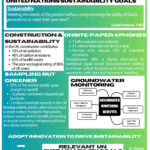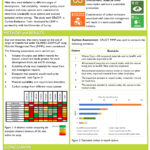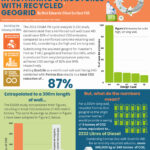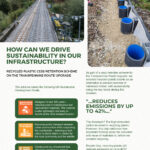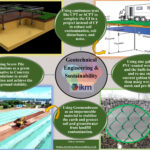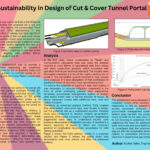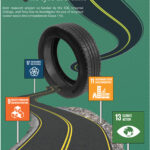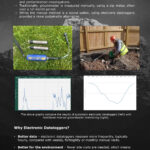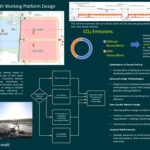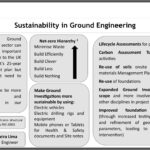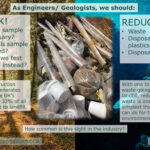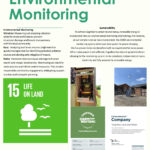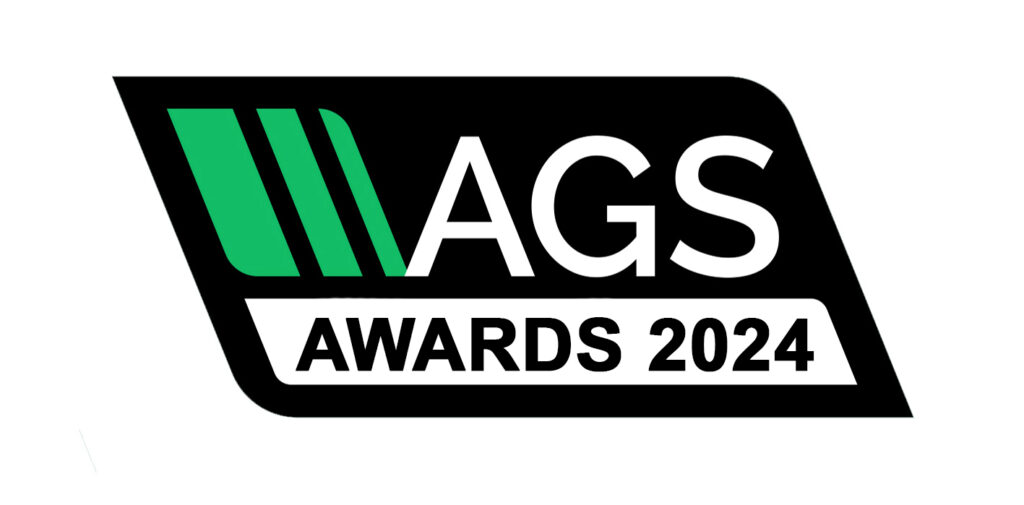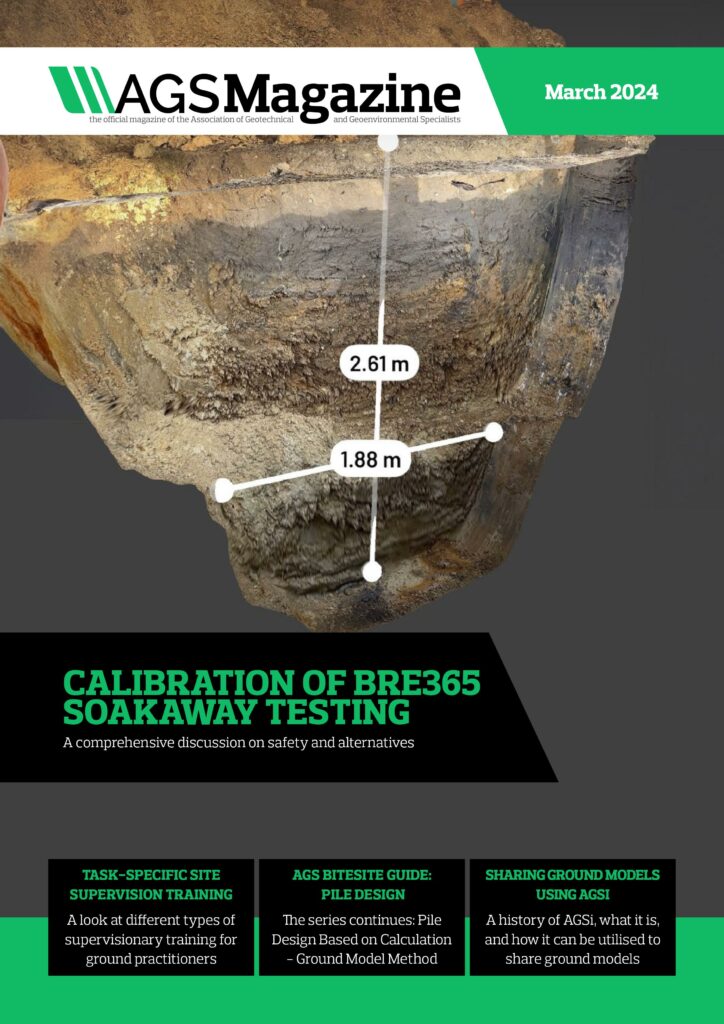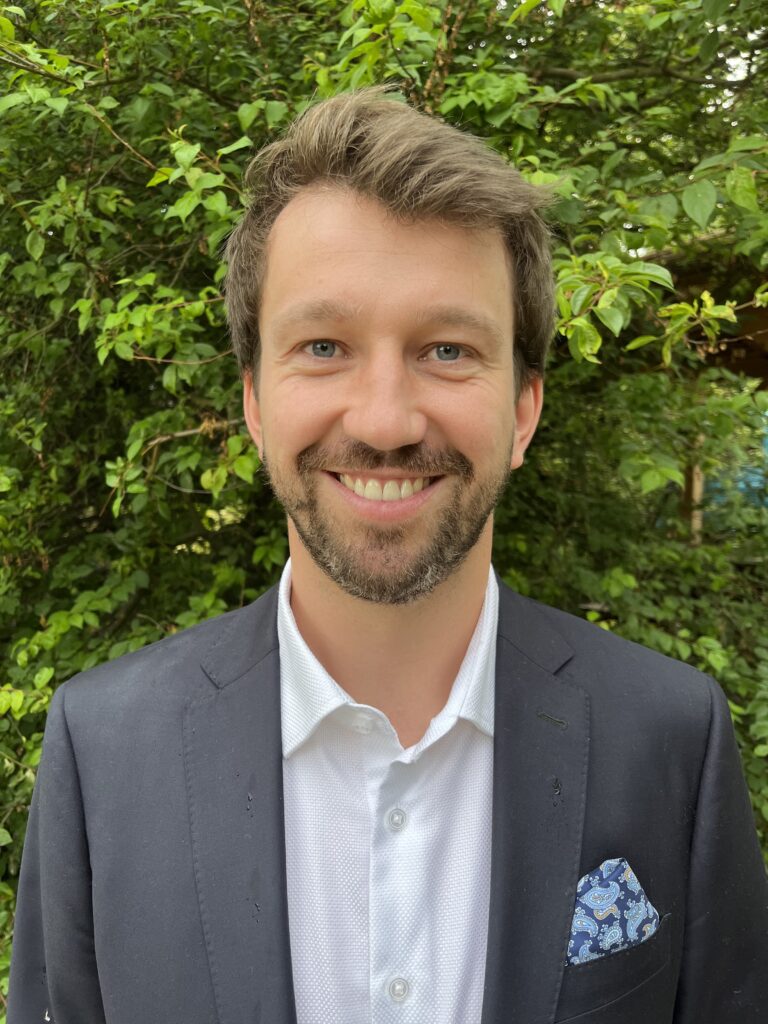Photograph taken during restoration of the Walthamstow Wetlands (Ramboll, 2016)
As an industry, we need to widen our sustainability focus away from carbon management and further afield to include biodiversity, nature-based solutions and climate adaptation. Our six practical steps that you can follow as geotechnical engineers to implement the wider aspects of sustainability effectively are as follows:
- Improve your working practices by upskilling yourself and your colleagues in the broader principles of sustainability.
- Engage your workforce and equip them with the skills they need to design sustainable and climate adaptable solutions.
- Be open to non-traditional approaches and innovative ideas and encourage research in industry applicable solutions on your projects focusing on biodiversity and nature-based solutions.
- Consult ecologists at preliminary stages in your projects.
- Engage with researchers into the use of new materials for construction or the adaptation of existing processes utilising constituents that enable biodiversity net gain.
- Most importantly, don’t wait for someone else to ask you to consider the many aspects of sustainability, take the initiative yourself, and educate your Clients in the process.
We hope that you come away from this article inspired to think more broadly about sustainability.
The scope of sustainability within the ground engineering sector in the UK is developing as Clients, Contractors and Consultants start to take more responsibility to reduce the negative environmental and societal impact that the construction industry creates. The focus within sustainability for the last decade has been on calculating and reducing carbon on projects from materials, transport, and operations. Despite the progress geotechnical engineers have made in this area, we seem to have forgotten that the term ‘sustainability’ encompasses so much more than carbon management and it is pivotal that these other aspects of sustainability, including biodiversity and climate resilience, are considered.
As geotechnical engineers, we have influence on a wide variety of multi-disciplinary construction projects and engage in all stages from outline planning to construction. Therefore, we are in an advantageous position to promote and incorporate the wider themes of sustainability into our designs. It is important that we don’t rest on the sustainability actions of other disciplines but make our own impact as a profession and contribute to the UN Sustainable Development Goals across a range of projects.
There is minimal research or discussion on how ground engineering can beneficially impact biodiversity and embed climate resilience into our designs and in this article we aim to encourage these lines of conversation and pose questions to the ground engineering sector to deliver a more holistic approach to the delivery of sustainable design solutions.
Biodiversity, short for “biological diversity”, is a term used to describe the variability of life on Earth. In recent times, the importance of biodiversity net gain (BNG) has been stressed in the civil engineering sector, with at least 10% BNG becoming a legal requirement for any projects requiring planning permission as of January 2024. This means that these developments must increase the biodiversity value of their sites by 10% on project completion.
In our line of work we have the potential to cause biodiversity loss when developing sites. When constructing linear infrastructure, if not enough care is taken to preserve biodiversity we could cut through habitats displacing species; or we could create barriers to groundwater using embedded walls impacting nearby habitats due to reduced groundwater flow. If we don’t change the way we work, we will continue to contribute to the biodiversity crisis, which is closely linked to the climate crisis. As an industry, we need to adapt our typical working practices to embed biodiversity net gain through the whole life of the project alongside effective carbon management.
At Ramboll, we are focused on considering the potential for biodiversity net gain in our projects. One exemplar project was the Walthamstow Wetlands in London, which won the GE Sustainability Award in 2018. The wider project had impressive biodiversity accomplishments, restoring valuable wetland area in an urban environment. However, the geotechnical design itself also contributed to improving the biodiversity of the site: an earth retention scheme was designed using timber kingposts and geotextiles as opposed to sheet piles or gabions. Due to the flexibility of the geotextiles, the material could easily imitate natural flowing lines. The geotextiles were also porous, allowing water to flow through the structure, preventing the water from stagnating. The short construction programme required to install this geotechnical scheme also meant that the bird-nesting season was not impacted. As well as offering a low carbon solution, this project also considered the wider aspects of environmental sustainability.
As part of the foundation design of offshore wind turbines, at Ramboll we are currently researching into offshore habitat creation, which will aim to improve the biodiversity of the oceans by supporting UNSDG 14 – Life Below Water. Offshore wind farms can become havens for marine life as the foundations below sea level can become artificial reefs and offer new marine habitats. Scour protection measures can be used to improve biodiversity, by using precast concrete units with cavities for life to inhabit and materials that mimic natural chemical substrates. These measures encourage marine growth around foundations, with the possibility for mussels and anemones to colonise the foundations over time.

Marine habitat after the installation of OWTs; Illustration by Hendrik Gheerardyn from S. Degraer, D. A. Carey, J. W.P. Coolen, Z. L. Hutchison, F. Kerckhof, B. Rumes and J. Vanaverbeke, “Offshore wind farm artificial reefs affect ecosystem structure and functions,” Oceanography, vol. 33, no. 4, pp. 48-57, 2020.
However, it is important to consider the negative impacts that are inherent in the foundation design and mitigate these where possible. Marine ecosystems can be disturbed by the noise and vibration produced when piles are driven into the seabed. There are several methods that can be used to mitigate the noise generated, including physical barriers, bubble curtains and viscous dampers (cushions). A combination of these techniques can be applied in addition to vibro-hammer systems for pile driving which are significantly quieter. These techniques all aim to minimise the impact of construction to local wildlife.
Whilst some modern civil engineering projects have goals for biodiversity net gain, the input that we have contributed as geotechnical engineers to date has typically remained a traditional approach. We as an industry need to push ourselves to contribute to biodiversity net gain as part of sub-structure, earthworks, and foundation design, rather than waiting for other disciplines to achieve net gain on our behalf. So, in addition to the above examples, what can we do as geotechnical designers? Our advice to you is as follows:
- Minimise your project footprint area. This can be done by increasing embankment slopes and utilising sheet pile walls instead of solutions that require more space. This will minimise the impact on the biodiversity of the site; however, you should also be aware to consider the carbon footprints of the scheme options.
- Avoid regrading areas unless necessary; otherwise, design earthworks suitable for plant growth and habitat development through consideration of slope angles, provision of suitable drainage/irrigation and effective replanting through engagement with ecologists on appropriate native planting mixes.
- Engage early with ecologists prior to finalising the design for the project. Ecologists are much more likely to be able to provide cost-effective and valuable solutions for biodiversity at earlier stages of the project.
- Consider your impact on biodiversity when planning ground investigations and site walkovers, regardless of the scale of the project.
- Source responsible materials. Consider the embodied ecological impact of materials caused by the extraction and manufacturing process (https://ukgbc.org/our-work/topics/embodied-ecological-impacts/) in addition to the embodied carbon of those materials. We should be reviewing the supply chain of the materials we are specifying and ensuring that materials are recycled/re-used wherever possible.
- Consider the materials you are placing in the ground and the impact they may have. For example, consider the material’s chemical composition and its likelihood for releasing microplastics, and whether a retaining wall which could create a groundwater barrier is required or if it could be permeable. Use natural materials instead of impermeable concrete, for example, use permeable stone columns instead of piles; or design rafts instead of piles to prevent interference with aquifers.
More sustainable geotechnical solutions can not only be lower in embodied carbon, but can also be nature-based, improving the biodiversity outcomes of our projects. Nature-based geotechnical solutions can be defined as primarily geotechnical designs that additionally protect, sustainably manage, and restore natural ecosystems. A practical example that is within our reach is designing slopes for embankments with planting and vegetation and incorporating the benefits of mechanical reinforcement from roots and increase in suction from evapotranspiration. This not only reduces the overdesign of slopes but also, if landscaped correctly and using native plants, can generate a biodiverse geotechnical solution based on nature. To achieve an immediate benefit of this solution it may require the plants to be imported as shrubs rather than seeds so that the vegetation is established more quickly. Similarly to this, planting of trees in specific locations can be a sustainable and nature-based solution to landslide prevention.
An emerging field within ground engineering, outside of carbon management, is the use of bio-inspiration to address geotechnical stability issues. However, these solutions are not common and require assessment of the relative spatial and temporal scales between biological systems and engineering. Biological processes typically occur on a much smaller scale and at shallower depths, hence, the magnitude of pressures is different, as are the strength and stiffness properties. These factors make it challenging to apply biological processes to geotechnical solutions. However, a good example of this is the use of bio-cementation for soil stabilisation or ground improvement. Bio-cementation uses microbially induced carbonate precipitation (MICP) to produce calcium carbonate (CaCO3) to increase the strength and rigidity of granular soils, improving the strength properties by improving shear strength and compressibility (Safdar et al, 2021). Ramboll are facilitating a Network Rail project with Southbank University where bio-cementation is being trialled on 30m of new embankment over a horizon of soft peat. If this process becomes more widely researched, it could become an innovative way of stabilising weak soils without the use of imported fill or carbon intensive binders.

The biocementation process. Diagram by ACS Sustainable Chem. Eng. 2017, 5, 6, 5183–5190, Publication Date: May 16, 2017. https://doi.org/10.1021/acssuschemeng.7b00521.Copyright © 2017 American Chemical Society
When considering geotechnical problems, in addition to reducing embodied carbon and improving the biodiversity of our projects, we must design for the future climate. Adaptation of our geotechnical designs to climate change is becoming more critical as we experience ever more frequent extreme weather events and rising global temperatures. Climate resilient designs can be environmentally and economically more valuable, increasing design life, reducing the need for demolition and replacement of assets and, decreasing the risk of engineering failure if a one-off weather event occurs.
Implementation of climate models in geotechnical design could include fluctuating or higher groundwater levels caused by sea level rise and flooding or conversely, lower groundwater levels caused by droughts and the over-extraction of groundwater. Additionally, we may need increased corrosion protection for steel marine structures caused by acidification of the oceans.
In the UK, shrink-swell of over consolidated clays is already an issue for structures, and this will only increase with climate change increasing rainfall and temperatures. Research into the use of natural material barriers (up to 1000mm thick) to reduce the increasing magnitude of movements of shrink-swell clays is being conducted by Climate Adaptation Control Technologies for Urban Spaces (CACTUS) not only as a way of adapting to climate change but also creating a nature-based geotechnical solution. Additionally, changes in the climate can affect the freeze-thaw cycle, impacting roads, pavements and railways requiring changes to sub-base design.
Another way of looking at climate adaptation could be the use of modular design. Marine walls for sea defences can be built by modular design allowing the height of the wall to change. Could this be applied to retaining walls in ground engineering?
We should be encouraging Clients to consider the impacts of climate change on their assets by highlighting to them both the environmental and economic long-term benefits of choosing the sustainable option. Widening our sustainability focus away from carbon management and further afield to include biodiversity, nature-based solutions and climate adaptation will bring great benefits to us as an industry, and to the planet.
Article produced by Marla Gillow, Senior Geotechnical Engineer, Ramboll and Meggie Cassidy, Principal Geotechnical Engineer, Ramboll

